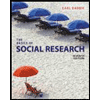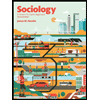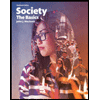
Since 1984, the national minimum
legal age for drinking alcohol has been 21. In
2009, a group of 135 college and university
presidents endorsed the Amethyst Initiative—an
advocacy proposal that comments on the failure
of current policies to socialize young people
to handle alcohol responsibly and encourages
study and public debate about finding better
ideas. Included among the ideas for debate was
lowering the drinking age to 18. Estimates are
that each year about 5,000 people under the age
of 21 die as a result of underage drinking (from
motor vehicle crashes, homicides, suicides, etc.).
Proponents argue that the current drinking
age has not stopped excessive alcohol consumption, but it has pushed it out of the open to where
it cannot be monitored. Rather than reducing
drinking after driving, it may actually be leading to an increase as parties move from oncampus to off-campus. Opponents of lowering
the drinking age argue that such a move would
simply push the dangers of excessive alcohol
consumption—to personal health and safety and
to that of others—to a younger age, and that it
might lead to an increase in driving after drinking among this age group. Meanwhile, social
scientists and public health experts have begun
to try to document the likely effects of maintaining the current policy or revising it (Wechsler
and Nelson, 2010).
What would you identify as being the likely
consequences—positive and/or negative—of lowering the drinking age to 18? As a social
scientist, how could you study this issue? What
are the key arguments on both sides of the
issue?
Trending nowThis is a popular solution!
Step by stepSolved in 2 steps

- KETING ETHICS Ⓡ Saved Which of the following is an example of a marketer exhibiting the ethical value of citizenship? Multiple Choice A firm that makes office prepackaged meals and sandwiches donates meals and sandwiches to homeless shelters in its community. A television advertisement that shows excited new members of the local fitness center reveals that "members" are paid actors. O An adventure travel company makes sure to include people of different genders, races, and ages in its marketing campaign. A retail website has safeguards in place to protect the personal information of its customers. A maker of mountain bicycles honors its satisfaction and safety guarantee.arrow_forwardIs Facebook acting responsibly or merely trying to monetize kids as critics claim?arrow_forwardHow has social media influenced how health care is marketed to health care consumers and how consumers receive health information? ?A care consi ers receive hap C S. D KOarrow_forward
 Social Psychology (10th Edition)SociologyISBN:9780134641287Author:Elliot Aronson, Timothy D. Wilson, Robin M. Akert, Samuel R. SommersPublisher:Pearson College Div
Social Psychology (10th Edition)SociologyISBN:9780134641287Author:Elliot Aronson, Timothy D. Wilson, Robin M. Akert, Samuel R. SommersPublisher:Pearson College Div Introduction to Sociology (Eleventh Edition)SociologyISBN:9780393639407Author:Deborah Carr, Anthony Giddens, Mitchell Duneier, Richard P. AppelbaumPublisher:W. W. Norton & Company
Introduction to Sociology (Eleventh Edition)SociologyISBN:9780393639407Author:Deborah Carr, Anthony Giddens, Mitchell Duneier, Richard P. AppelbaumPublisher:W. W. Norton & Company The Basics of Social Research (MindTap Course Lis...SociologyISBN:9781305503076Author:Earl R. BabbiePublisher:Cengage Learning
The Basics of Social Research (MindTap Course Lis...SociologyISBN:9781305503076Author:Earl R. BabbiePublisher:Cengage Learning Criminalistics: An Introduction to Forensic Scien...SociologyISBN:9780134477596Author:Saferstein, RichardPublisher:PEARSON
Criminalistics: An Introduction to Forensic Scien...SociologyISBN:9780134477596Author:Saferstein, RichardPublisher:PEARSON Sociology: A Down-to-Earth Approach (13th Edition)SociologyISBN:9780134205571Author:James M. HenslinPublisher:PEARSON
Sociology: A Down-to-Earth Approach (13th Edition)SociologyISBN:9780134205571Author:James M. HenslinPublisher:PEARSON Society: The Basics (14th Edition)SociologyISBN:9780134206325Author:John J. MacionisPublisher:PEARSON
Society: The Basics (14th Edition)SociologyISBN:9780134206325Author:John J. MacionisPublisher:PEARSON





